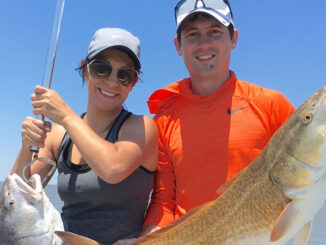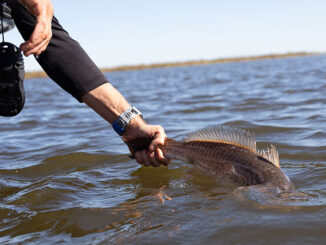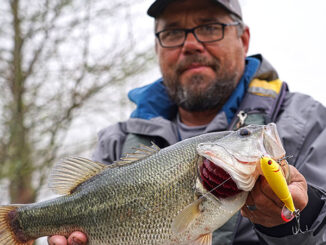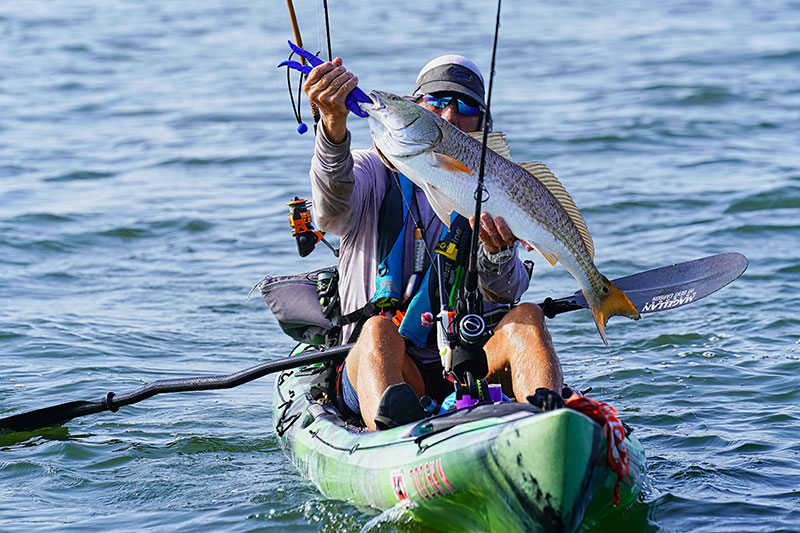
The iconic Cajun Sleigh Ride is a highly revered right of passage for coastal Louisiana kayak anglers. So much so that they want to do it over and over. The term refers to being towed around in the kayak while fighting a big bull redfish. It is quite the exhilarating experience.
While there is no actual designation constituting the length of a bull red, most Louisiana anglers consider it to be 27 inches or greater, which is currently the upper slot length for creel limits. However, that is likely changing. Will proposed new regulations end Cajun Sleigh Rides? Not a chance.
Longstanding current redfish regulations provide for a five-fish per angler daily limit with a slot size of 16 inches minimum, up to 27 inches maximum. However, there is a provision that allows one of the five total fish to be over 27 inches. It is those over size reds, the bulls, that are so highly sought for Cajun Sleigh Rides. Although those larger reds are rarely kept for dinner, it is currently legal for an angler to keep one.
Based on biological studies and angler reports, concern has built in the last year or so that redfish populations are on the decline. Louisiana has a set management goal of 30 percent of the juvenile redfish successfully escaping the inshore waters where they live, to join the offshore breeding stock of larger fish.
Take size changing?
Current information shows that the escapement rate is only around 20 percent. Therefore, the Wildlife and Fisheries Commission has provided notice that they intend to reduce the recreational take of redfish by making changes to the creel limit and size. The proposed changes call for reducing the total take to three redfish per angler, per day, and new slot size limits of 18 inches minimum and 24 inches maximum. However, no take will be allowed of any redfish over 24 inches.
So, what does this mean for kayak anglers? Not much. Support for regulations changes, although not universal, appears to have strong support from the kayak angler community. Recognizing that something needs to be done to preserve redfish angling for the future, kayak anglers are willing to adapt and work within the new regs, once they are finalized.
Although the higher minimum and lower maximum sizes may make it a bit more difficult to fill limits within that narrower slot range, the reduction from five fish to three fish makes it a little easier.
Careful handling needed
So, what about bull reds? Should they still be targeted for kayak sleigh rides? Absolutely. The only thing different is that kayak anglers should be a bit more careful in how they fight and revive these great fish.
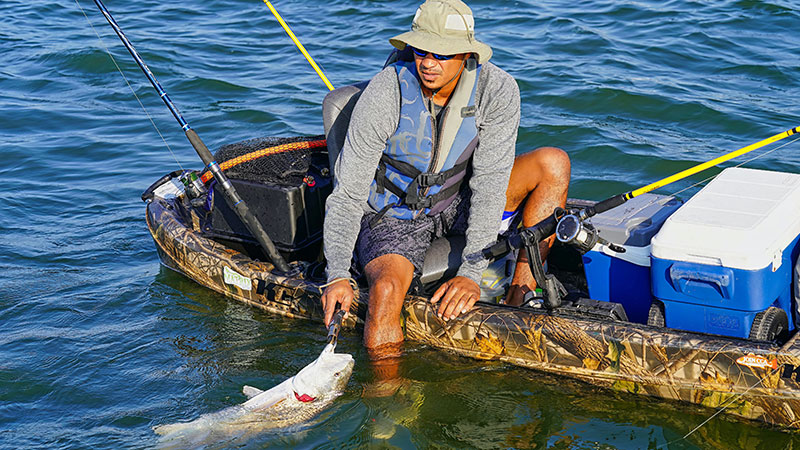
Currently, if an oversize bull red is unable to be revived, that angler can keep it as part of the daily limit. However, that will no longer be allowed once the regulations change. Therefore, if specifically targeting bulls, kayak anglers should consider upping their gear size a bit in order to land the fish with a shorter fight time. Of course, there will still be times when fishing lighter tackle that you inadvertently hook a bull. In this instance, once the fish is confirmed, tighten the drag down and try to land the fish as quickly as possible.
A quick photo
Once landed, keep the fish in the water as much as possible while removing the hook. Use a quality lip grip or large landing net. If you want photos, get everything set up while the fish is still in the water. When ready, briefly remove the fish for a quick picture or two. A key step in preserving the health of these fish is proper revival. One of the best ways is to tow the red along side the kayak forcing water through the fish’s mouth and over its gills. Use a lip grip to keep the fish upright and facing forward. The fish will generally let you know when it is ready for release. Once the fish gives a few kicks with its tail, you can release the fish grip and let it swim off. If it rolls over, quickly get it back upright and repeat the towing/revival process.
Bull red fishing in the deeper coastal passes peaks in late summer as they have gathered in these areas for spawning. The fishing remains good through the fall, until major cold fronts disperse them out into offshore waters. There really is no better time to pursue a bull red than in October when they are still around in good numbers and the milder weather makes fishing them in a kayak more pleasurable. If you have never caught a bull red in your kayak, it is hard to beat a late summer/early fall trip to Grand Isle.
Easy to find reds
Reds in Caminada Pass travel in schools and can easily be located with a depth finder or watching for surface activity as they feed en masse. They are not picky eaters and can be caught on a wide variety of live, dead, and artificial baits. If you encounter one of these feeding schools, it really makes no difference what you’re throwing as the frenzied feeding competition has them eating anything that comes close.
There is a general consensus that something must be done to preserve and rebuild the redfish stocks for the future. These proposed regulation changes are aimed at increasing the recruitment rate and returning the spawning populations to healthier levels. The Cajun Sleigh Ride is here to stay, and responsible kayak anglers are willing to do their part to see to it.
